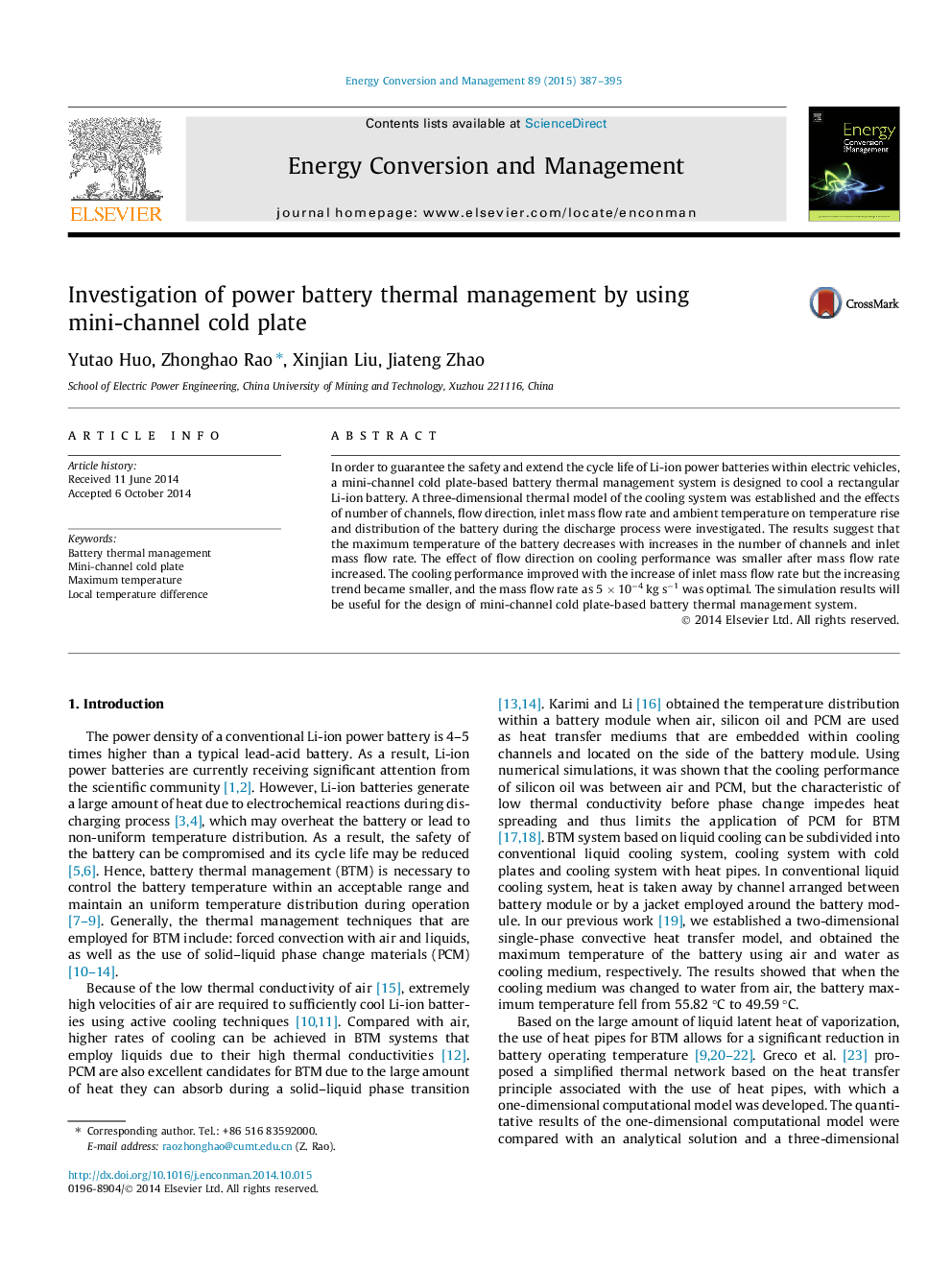| Article ID | Journal | Published Year | Pages | File Type |
|---|---|---|---|---|
| 7163898 | Energy Conversion and Management | 2015 | 9 Pages |
Abstract
In order to guarantee the safety and extend the cycle life of Li-ion power batteries within electric vehicles, a mini-channel cold plate-based battery thermal management system is designed to cool a rectangular Li-ion battery. A three-dimensional thermal model of the cooling system was established and the effects of number of channels, flow direction, inlet mass flow rate and ambient temperature on temperature rise and distribution of the battery during the discharge process were investigated. The results suggest that the maximum temperature of the battery decreases with increases in the number of channels and inlet mass flow rate. The effect of flow direction on cooling performance was smaller after mass flow rate increased. The cooling performance improved with the increase of inlet mass flow rate but the increasing trend became smaller, and the mass flow rate as 5 Ã 10â4 kg sâ1 was optimal. The simulation results will be useful for the design of mini-channel cold plate-based battery thermal management system.
Related Topics
Physical Sciences and Engineering
Energy
Energy (General)
Authors
Yutao Huo, Zhonghao Rao, Xinjian Liu, Jiateng Zhao,
